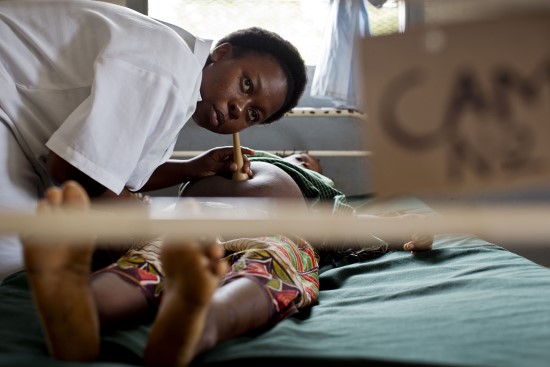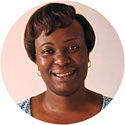
29 Apr Providing Care, Giving Life: The champion role of the midwife
 In many parts of the world, midwives are the main caregivers for women and their newborns during pregnancy, labor, childbirth, and postpartum. Qualified and adequately resourced midwives can prevent complications through the maternity continuum of care and avert unnecessary maternal and newborn deaths and disabilities. But as with other health services in low-or middle-income countries, quality midwifery can be hard to come by for two principle reasons: a lack of skill and insufficient numbers of health workers for the population. HRH2030 Malawi Project Director Grace Namaganda recounts a personal experience from the maternity ward of a hospital in Uganda.
In many parts of the world, midwives are the main caregivers for women and their newborns during pregnancy, labor, childbirth, and postpartum. Qualified and adequately resourced midwives can prevent complications through the maternity continuum of care and avert unnecessary maternal and newborn deaths and disabilities. But as with other health services in low-or middle-income countries, quality midwifery can be hard to come by for two principle reasons: a lack of skill and insufficient numbers of health workers for the population. HRH2030 Malawi Project Director Grace Namaganda recounts a personal experience from the maternity ward of a hospital in Uganda.
___
To me, health workers are the most important resource that a community can have. This is based on my personal experience from about twelve years ago when I went to seek health care in what I considered a well-facilitated hospital.
This was in a well-regarded hospital in Kampala, Uganda. I was in a private ward. I had gone for maternity services; actually, I had gone to have my second baby. From a lay-man’s perspective, the hospital was well-staffed because the labor ward alone had three midwives, its own doctor on stand-by, and a consultant gynecologist on call. So, I was confident that I was going to get the best services possible. We were three mothers in labor that night, we were all progressing very well, and the midwives were taking good care of us, so we did not see the need to call our respective gynecologists. However, in a matter of hours, everything changed. The other two mothers developed complications and the doctor had to run to the operating theater accompanied by two of the midwives. I was left with one midwife. This midwife continued to monitor me, but I then too developed complications. She did her best and I was able to deliver, but she had to resuscitate the baby and rush him to a special care unit, leaving me alone and unattended. There was nothing I could do but wait. My relatives were outside the labor ward very worried. I nearly lost my life.
For me, that was the turning point in my life and career. That is why from that time in December 2006, I changed my career to support human resources in health. I have since then advocated for the health workforce and am dedicating the rest of my life to be the mouthpiece for health workers. I advocate for adequate numbers and skill mix of health workers, better working conditions, better remuneration. I know it takes time to have everything in place, but I am not giving up. I was given a second chance to life thanks to that midwife on duty that night, many mothers have not been so lucky. If this could happen to me, in a city, in a private ward, what is happening in remote health facilities? Let us work harder to make sure that we have adequate health workers where they are needed and that they are well-supported to do their work. We all have a role, let each of us do our part.
___
According to the International Confederation of Midwives, more than 340,000 women and three million infants around the world die each year from preventable complications from pregnancy and childbirth. And while the World Health Organization (WHO)’s most recent midwifery report highlights that well-trained midwives could help avert roughly two thirds of all maternal and newborn deaths, they also estimate that only four of 73 countries have invested in educating midwifery personnel with necessary skills. Beyond the skills question is also a numbers concern. The WHO indicates a global shortage of midwives: Less than half of the world’s skilled midwives work in those 73 countries where more than 90 percent of all maternal and newborn deaths occur. Why do we need to ensure midwives attain the skills they need and are working where they are most needed? It’s simple. Skilled midwives save lives.





